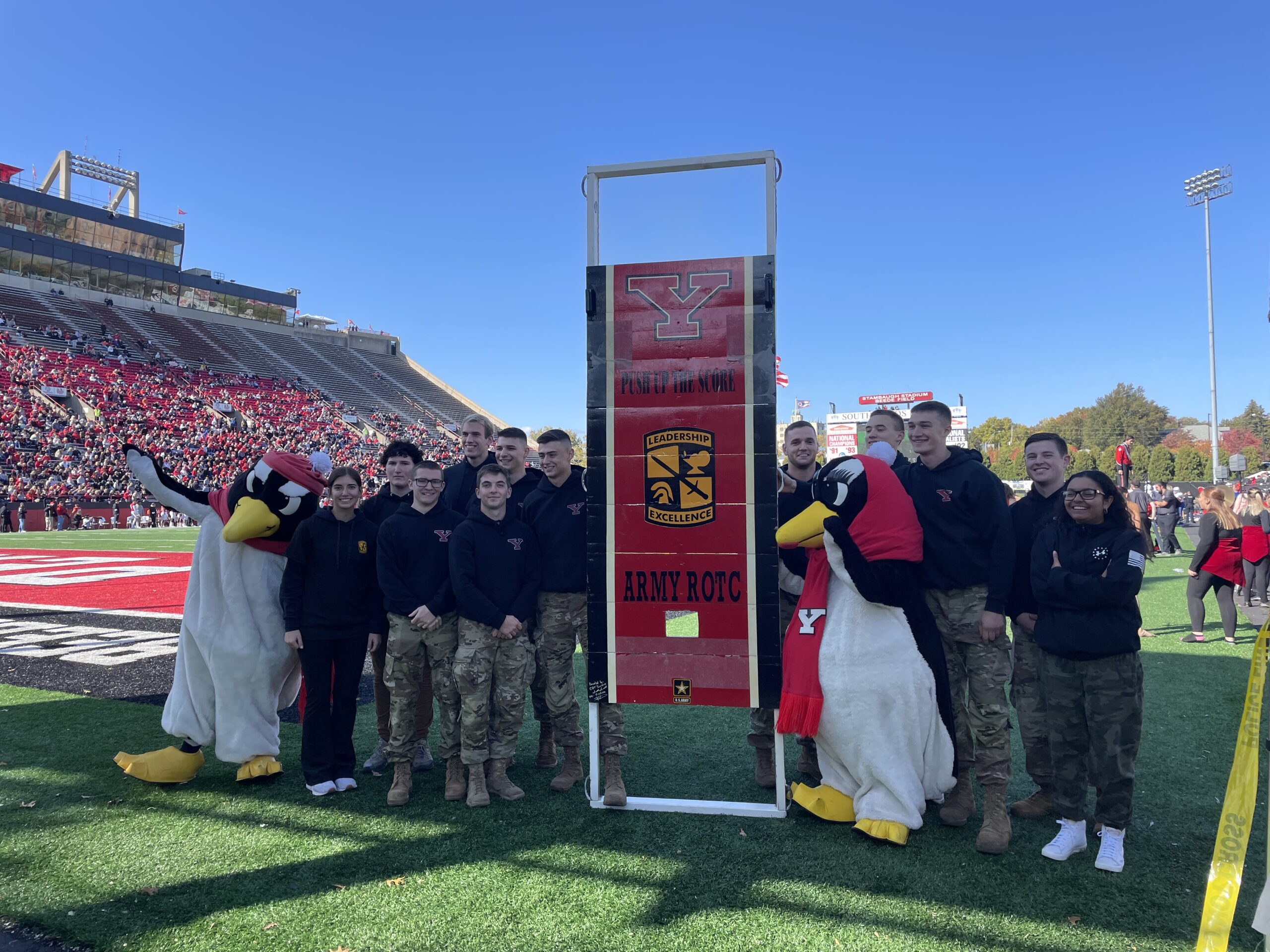By Gunnhildur Baldursdottir
Students in the Reserve Officers’ Training Corps are hard to miss at Youngstown State University football games.
Most YSU students are familiar with how the ROTC boosts school spirit; with the boom of a cannon and push-ups commencing after each touchdown — but what students may not realize is the amount of training and responsibility behind the push-ups.
Lieutenant Colonel Adrien Humphreys, department chair and professor of military science for the Army ROTC program, said the program’s purpose is to develop commissioned officers who will become future military leaders. During their time in ROTC, students must meet the program’s requirements of academic excellence, physical training and practice leadership.
Students also need to be medically qualified. Some disqualifications for students interested in the ROTC program include poor eyesight, asthma and peanut allergies.
“Obviously, they have to do a physical fitness test. They have to do a certain amount of hand-release push-ups, a certain amount of deadlift and a two-mile run at the minimum — and all of these are timed events. They have to do it every semester and pass this until they graduate,” Humphreys said.
Ellie Maurice, ROTC member and sophomore marketing major, also holds a squad leader position and is a public affairs officer in the ROTC.
Maurice said completing the Army Combat Fitness Test is rewarding. Students are required to challenge the test twice a year. Leading to the test, students attend physical training five mornings a week.
“[The physical fitness test is] definitely really rewarding when you’re done and going on about your day like, wow, I woke up that early, and I did all that, and here I am now doing this [schoolwork],” Maurice said.
Scotty Shaffer, ROTC member and a senior business administration major, said another requirement students must fulfill is Combat Water Survival Training, known as CWST. The training is broken into three events, which students complete partly blindfolded and in full uniform.
“First, you have to jump in with some gear on, and you have to drop the gear in the pool. Next, you must swim 20 meters with a rifle, and you can’t let the rifle touch the water. And then the third one, this is the exciting one,” Shaffer said. “You get to go up on the first platform [five meters] blindfolded, and you get to step off with a rifle [simulated] above your head without dropping it into the water.”
Humphreys said the purpose of the CWST is to confront and overcome personal fear and is a permissions requirement in the army. They completed the Army Combat Fitness Test on Nov. 2 and CWST on Nov. 9.
Brandon Greathouse, ROTC member and a senior business major, said that even though being part of ROTC is fun, the time requirements can take a toll.
“The responsibilities do affect your homework and all the other parts of your life, your work-life balance. So, because I wake up early, I have to go to bed earlier, which affects what time I get done with work,” Greathouse said.
The ROTC program is open to recruitment, according to Humphreys.
“It doesn’t matter what major they have. You could be a science major or you could be a nursing major. This program is open to you,” Humphreys said.
Humphreys said the ROTC had seen an increase in membership in the last two years, with 35- 40 students participating yearly. Eight seniors graduated from the program last spring, which Humphreys said was the largest class in the last five years.
The graduates then serve as Second Lieutenants in the Army, and some are on active duty in Germany, South Korea, Alaska and Hawaii.
“You can join at any time, preferably during your freshman year, but we’ll take you up until your junior year,” Humphreys said.
